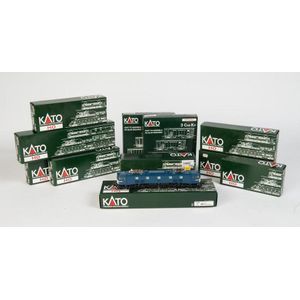Mahogany Side Table with Barley Twist Legs
You must be a subscriber, and be logged in to view price and dealer details.
Subscribe Now to view actual auction price for this item
When you subscribe, you have the option of setting the currency in which to display prices to $Au, $US, $NZ or Stg.
- Mahogany - Mahogany is a dense, close grained red-coloured timber from the West Indies and Central America. It was first imported into Europe in the the early 18th century and its use continued through the 19th century. It was popular for furniture making because of its strength, the wide boards available, the distinctive grain on some boards, termed flame mahogany and the rich warm colour of the timber when it was polished.. The "flame" was produced where a limb grew out from the trunk of the tree, and this timber was usually sliced into veneers for feature panels on doors, backs and cornices.
Some terms used to describe mahogany relate to the country from which it originally came, such as "Cuban" mahogany, "Honduras" mahogany etc. However unless the wood has been tested the names assigned are more a selling feature, rather than a true indication of the timber's origin. - Barley Twist - The leg, and frequently other uprights such as columns, chair frames, spindles and stretchers, are turned in fairly wide and deep spirals, usually slightly rounded. Also known as the 'Jacobean twist' and common on the dark stained Jacobean Revival furniture of the 1930s and 40s.
As a rule, the twists on opposite uprights should move in a contrary direction. Thus, if the spiral on a right side is clockwise, that on the left side should move in a counter-clockwise direction.
This is also true of rope-twist or cable-twist turning, a nautical term that came into fashion after Nelson's victories over the French fleet. The essential difference is that with rope twists, the spirals are more finely turned on the lathe and placed closer together, than they are with barley-sugar turnings. - Frieze - An architectural term denoting the flat, shaped or convex horizontal surface of furniture, between the architrave and the cornice, usually found on a cabinet or bookcase, or on desks and tables where it may include drawers, the area between the top and the legs. In ceramics, the term refers to the banding, of usually a repeating pattern, on the rims of plates and vases.
- Bun Feet - Similar to ball feet, though somewhat compressed or flattened in appearance. Introduced during the late 17th century, but they have been used on furniture up to the present day.
This item has been included into following indexes:
Visually similar items

A pair 18ct white gold jade and diamond drop earrings, each a green jade disc with centre and surround of round brilliant cut diamonds, diamond weight 70 = 0.33ct.

Kato Precision Railroad Models: Ho Scale: An EF58 Electric Locomotive [1-301], a Hiroshima Electric Railway Type 200 Hannover Tram train [1-421], plus rolling stock comprising 1-809, 1-811, 1-813, 1-816, 1-821, 1-822, 1-823 and 2 3-car kits [38-0103] & [38

Carved whalebone. A curious circular whalebone, neatly carved to top and used as Islander currency in the 19th century, mounted. Whalebone, diameter 21 cm

Pavel Ovchinnikov, c.1880 Russian tea caddy bulbous shape, the body with red enamel work and silver dragonfly, spider and leaf motifs with a spider web background, the domed pull off cover with a silver leaf and a silver bug, gilt interior, weight 335 gram
